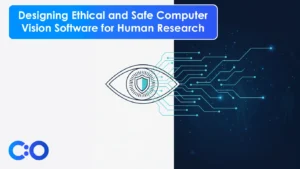

The grant life cycle is an overview of an extensive and complicated process of research funding mechanism that involves everything in its entirety from proposal solicitation, application, and submission to administration. A grant life cycle is significant to comprehend otherwise complex research policies and procedures required to identify funding opportunities, apply, manage, and subsequently qualify for the grant award. Most grant applicants categorize the whole procedure in the following seven steps:
The typical duration of each grant lifecycle and its phases are variables based on several factors, such as the type of grant, program category, project nature, funding agency, approval criteria, and individual terms and conditions related to the respective institute. Yet, the three distinct phases of a grant life cycle are consistent across federal funding agencies as defined by the Office of Management and Budget (OMB) Uniform Guidance & Administrative Requirements for Federal awards.
The three major stages: are pre-award, award, and post-award. The applicant/recipient and awarding agency have unique roles in each of the three major stages as follows:
Please note that the duration of the award phases varies depending on the aforementioned factors.
As you begin your research funding journey, several platforms can assist in the process. The challenge is to choose the most credible and accommodating foundation like that of the National Institutes of Health (NIH) to eliminate fallouts at any of the later stages. Before you start preparing for your proposal, you should lookup for successful grant examples concerning the field you are planning to apply. (Chung and Shauver, 2008)
The NIH Research Portfolio Online Reporting Tools (RePORT) was created to provide a searchable database of the scientific activities that take place at the NIH institutes and centers. From grant programs information to publications and inventions resulting from NIH funded research projects along with information about scientists and funded projects. You will also find active funding opportunity announcements (FOAs) for various grant programs. And this is where a grant life cycle commences.
The pre-award phase marks the beginning of the grant process that includes the funding agencies publishing funding opportunity announcements on Grants.gov, followed by the application submission and review of grant proposals. Before applying or in some cases submitting a letter for inquiry, you should ascertain your proposal’s eligibility by contacting the program officer or director to discuss the project. The efficient communication between the grant recipient and the funding agency’s staff is crucial during the entire course of the award process.
At this point, the following members of the grantors’ and grantees’ organization work closely together:
Grant recipient participants
Since you are applying to the solicited, competitive application process in response to the FoAs, the agencies will be well within their rights to discard any proposal submitted as a noncompetitive or investigator-initiated grant application. The FoAs contain detailed information about the objective of the award and estimated amount, eligibility requirements for applicants, application deadline, funding duration, and selection criteria. You will initiate the process by clearing the following screenings, also known as certifications of verification for federal compliance.
If your application successfully meets the eligibility requirements, you will be notified to submit your proposal within the short period of the announcement closing call, which is your last chance to finalize every detail, attachment, and certificate of the application. After that definite duration, you will be required to submit a complete project proposal. Consult your organization to decide upon the Application Submission Options to see which of the available methods suits the team. The NIH Application Submission System and Interface for Submission Tracking (ASSIST) or the standard Grants.gov.
Your application is liable to go through basic application checks after the submission to detect any problem that can result in application rejection with a “Rejected with Errors” status. If you opted for the Grants.gov option, you could check eRA Commons for the status of your application. It is an online interface for all stakeholders of the research grant process to share administrative information. eRA provides a list of errors in case of rejection that you must address and resubmit. If no problem is found, eRA then generates an associated document of all your submissions to post an application image for 2 business days in eRA Commons Status for you to view. The viewing window allows you to check your application and inform the eRA service desk of any missing attachments or texts.
Now, if your application manages to successfully navigate the stages of responding to the established requirements and was submitted on time without any glitches, it will be qualified for a review process. Grant applications are reviewed and scored based on the criteria mentioned in the FoAs. To understand the review panel, watch the mock review panel video released by the Center for Scientific Review (CSR) at the NIH to give new applicants an idea of how the peer review system operates.
For every grant application, there are several review panels consisting of a group of reviewers with different expertise areas and experience. Grant application reviewers are often regarded as an academic power group. All the hardship and struggle that you are signing up for is mostly to get past the stage of the peer review process because it has a profound impact on your scientific career, be it an early-stage investigator or an established scientist. Nobody wants to be rejected by the review committee that evaluates the application through various prisms, such as merit and proposal’s plausibility for the further progress of scientific innovations in health-related areas. (Abdoul et al., 2012)
The award phase is the shortest of all three phases; it is when, if you are successful in convincing the reviewer and the agency through your proposal of awarding you the grant, the agency will notify you by sending a Notice of Award (NoA). The grantee’s organization and the federal agency then negotiate the funding recommendations to decide upon the final budget for your project and give legal consent to the terms and conditions of the NoA. At this stage, both the institutes are formalizing the partnership to ensure complete abidance of rules, regulations, and policies. (Chung, Giladi and Hume, 2015)
In case you are unsuccessful, the agency will still notify you and provide relevant details of the decision.
The post-award or final phase begins as you lay out awarded funds and start the process of materializing your research proposal with proposed activities. This stage contains the implementation, development, and closeout of the grant program in accordance with the following structure:
Your grant payment would be made through either SMARTLINK II/ACH or CASHLINE/ACH unless you made a cash request.
The post-award phase includes constant monitoring of the funded project for any possible complications, compliance with the NoA terms and conditions, and performance analysis. You, as the grant recipient, are responsible for conducting routine progress and financial reporting for the complete duration of the grant and submit Research Performance Progress Reports (RPPR) to the awarding agency at different intervals. You must also accommodate your grantors to conduct audits and monitoring activities. In case change in the project, expenditure, and proposed activities, you’re liable to inform the funding agency well in advance.
If your project does not require the grant to be extended, the post-award phase concludes after the end of the period of performance and closeout activities that ensure the recipient has met all financial, invention, and record retention requirements.
